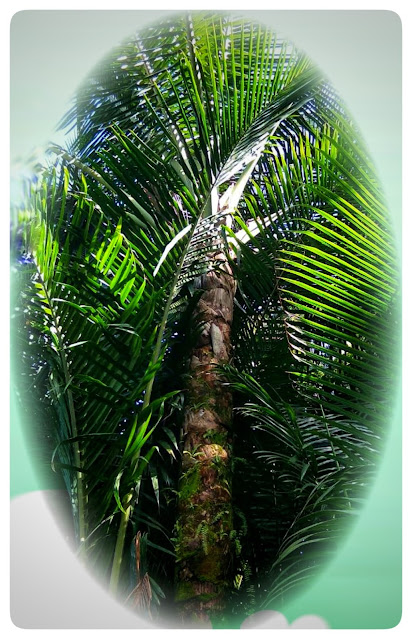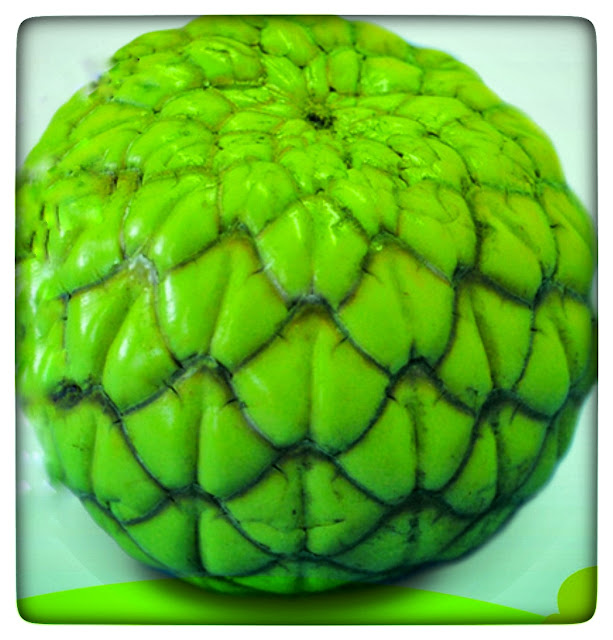This is Sago, a Source of Carbohydrates Apart from Rice and Potatoes
Have you guys had breakfast this morning? It's okay.
So, who has breakfast with fried rice, yellow rice, or uduk rice? Wow, a lot of people raised their hands apparently. Yup, in general, Indonesians choose a staple food from rice which can be processed into rice as a source of carbohydrates.
Carbohydrates are the body's main source of energy that serves as a source of fuel and food reserves, and allows us to move. In fact, besides rice, there are many other foodstuffs with high carbohydrate content, such as corn, sweet potatoes, and potatoes.
However, it feels like we have not "eat" if the rice is not served on the table. Even though I might have used up five roasted corns.
Another high-carbohydrate staple food commonly eaten by our brothers and sisters in eastern Indonesia. What's that? Yes that's right, that's sago.
For some people who are familiar with sago, of course, can easily describe what it looks like. However, for those who do not know of course wondering what sago is like.
What is the shape of the tree? How is it processed? Of course, how does it feel?
Let's now get to know sago so that we also understand food ingredients whose calorie content is not inferior to rice. Sago trees are thought to have come from Maluku or Papua.
Some even mention specifically coming from the Sentani area, Papua. Then spread in Southeast Asia, the Pacific, East Asia, and South Asia.
Broadly speaking, the sago tree with the Latin name Metroxylon sp. it is similar to a coconut tree. Sago includes monocotyledonous plants or keeping one seed from the family (family) Palmae, genus (genus) Metroxylon from the order Spadiciflorae.
Physical characteristics of sago palms
Sago tree trunk
The tree is erect and tall and can reach 20 meters. Pretty high isn't it? The height of the sago stems that begin to flower is between 10-15 meters.
The diameter of the sago stems is between 30 to 50 cm. While the outer skin is hard with a thickness of about 5 to 7 cm.
Sago root
Because it is a monocot plant, the roots of the sago palm are fibers with a very large number of roots. These roots can adapt to conditions of anaerobic watery soil or soil that contains less air.
Sago leaves
Sago tree leaves are almost the same as coconut tree leaves which are elongated lanceolate (the base and tip of the leaf are tapered) and grow on the petiole. Each strand has a main leaf bone in the middle.
Each leaf stalk consists of 50 pairs of leaflets with sizes between 60 to 180 cm with an average width of 5 cm. When young, the leaves of the sago palm are light green.
As they age, the sago leaves will turn dark green. The color will change to reddish brown when the leaves are old.
When young, the leaves are arranged in layers. However, at maturity they will separate and attach individually to the trunk segment.
Sago flower
Sago flowers are compound flowers that come out from the tip or top of the sago stem. The flowers are arranged in dense mangosteen and are small and white in color.
Sago fruit
If you have seen a coconut flower, yes, it is very similar in shape to it.
Sago fruit is different you know!. If the fruit of the coconut tree is as large as your head, the fruit of the sago tree is smaller.
The size is the size of an adult's fist. The sago fruit is arranged in bunches, almost like barking, large scaly, and green skin.
The fruit inside is brownish white, has seeds, and tastes very brown. Everything in the sago tree can be used by humans, from the leaves, flowers, fruit, tree trunks, to the roots.
This is the part of the sago tree that produces carbohydrates
You may wonder which part of the sago tree can produce this staple food source. The fruit is chelate, aka sepat, can it be made into food?
Sago, which later became a staple food, came from the trunk of the sago tree. It's true, the sago tree trunk which in our imagination is like a hard coconut tree trunk contains starch which is very useful for human food sources.
This is what's special from sago tree! The inner stem of sago is in the form of pith which contains fiber and starch. The pith is the deepest part of the vascular plant stem.
Pith is usually a dry soft tissue, sometimes small hollow. Therefore, sago flour comes from the pith of the sago tree trunk.




